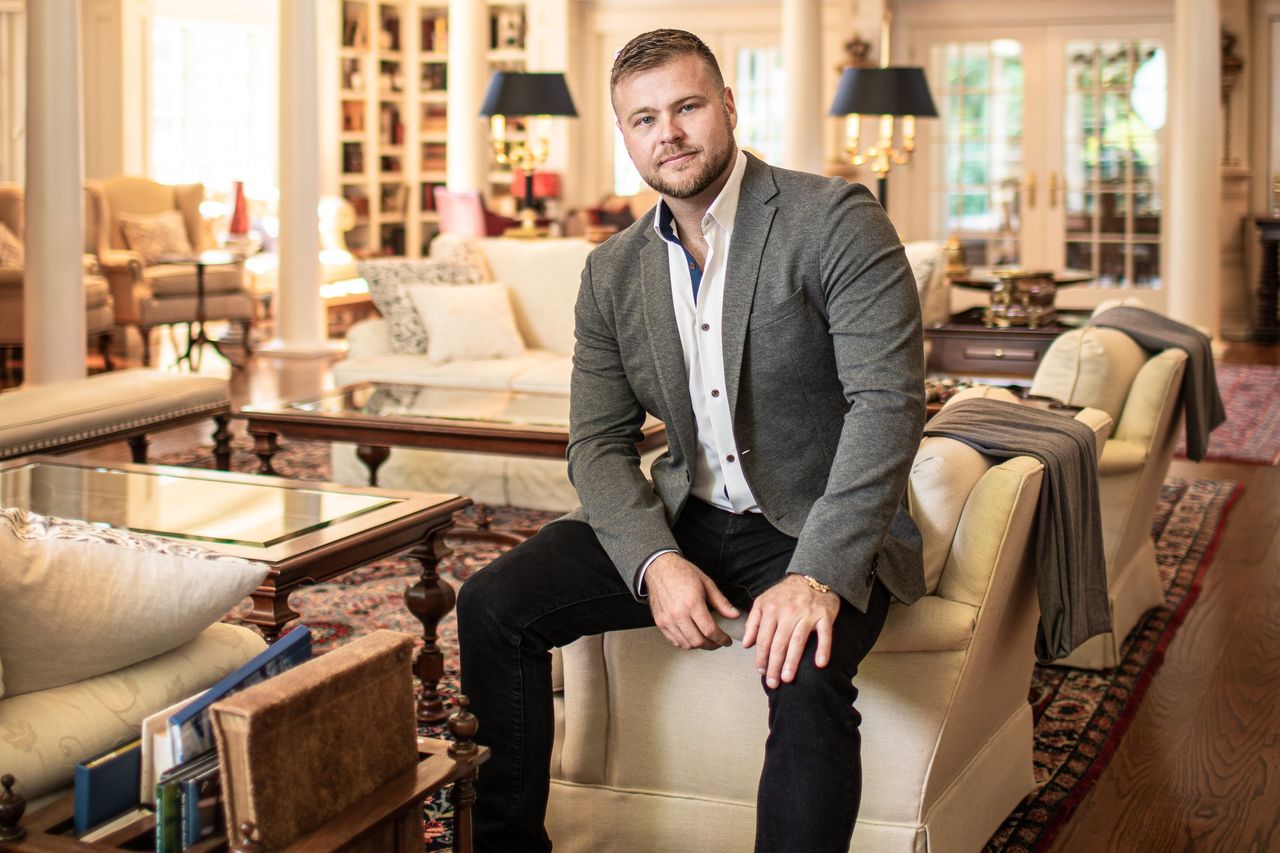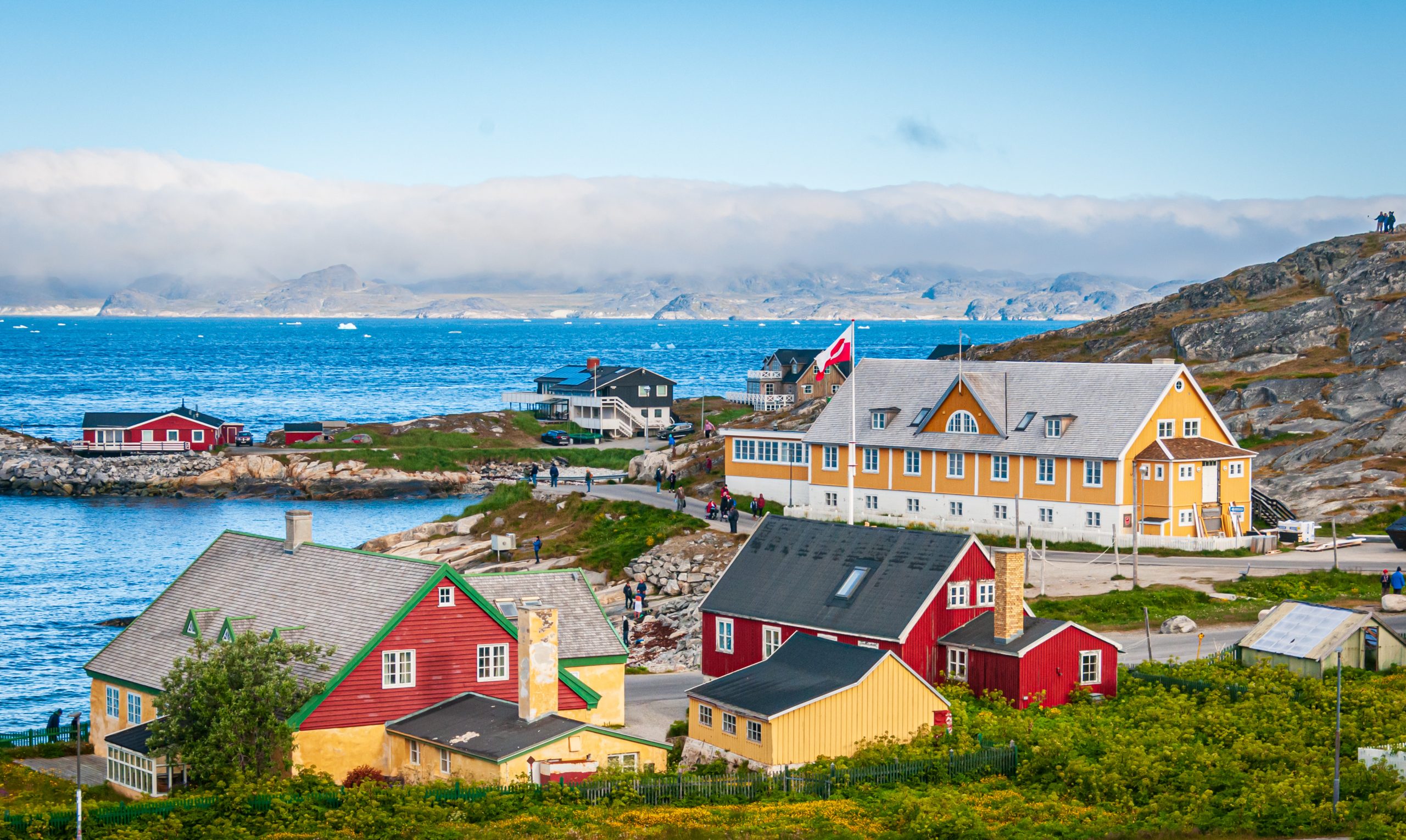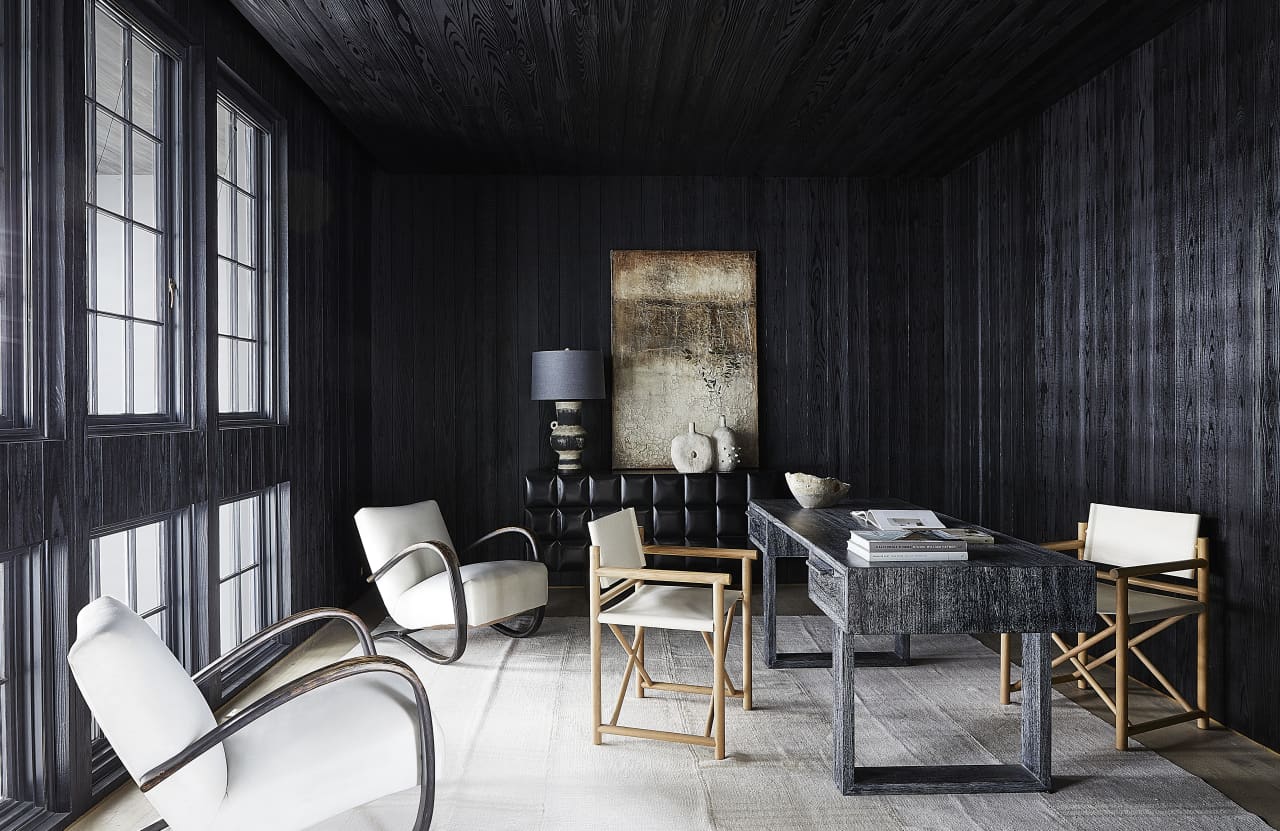It Was a Three-Bedroom Colonial. Now, This Rural Massachusetts Property Feels Like ‘Disneyland.’
As a baby, Michael “Mick” Kittredge III lived in what he recalls as a traditional house in western Central Massachusetts: a three-bedroom Colonial that his parents bought for $144,000 in 1984.
But by the time he was 10, Mr. Kittredge said his father—Michael J. Kittredge II, the founder of Yankee Candle Co., who died in 2019—had converted the inconspicuous property into a veritable Magic Kingdom in the small rural town of Leverett, population under 2,000. In the span of several years, the elder Mr. Kittredge had scooped up enough neighbouring properties to create an estate of more than 100 acres, some spilling over the border into Amherst. Today, the property features, among other outsized amenities, a water park, an arcade, tennis courts, a concert hall and places for guests to stay.
“It was like having Disneyland in the backyard,” said Mick Kittredge, now 32, who co-founded Kringle Candle Co. with his father in 2009. “When I was young, it was pretty much just a regular house.”
Now, a nearly 60-acre portion of the estate is coming onto the market for $23 million, said listing agent Johnny Hatem Jr. of Douglas Elliman. The gated property has a roughly 25,000-square-foot main house, two 4,000-square-foot guesthouses, two car barns, a clubhouse, an outdoor pool and a pool cabana with a full kitchen and bar. The arcade and water park are inside a separate 55,000-square-foot, two-story building, Mr. Hatem said.
A roughly 10-acre parcel with an 8,500-square-foot home and a guesthouse is listed separately for $3.99 million. An additional parcel, with an apple orchard, is also being sold separately. “This place is just too big for one,” said Mr. Kittredge.
On a recent August afternoon, Mick Kittredge navigated an Indian motorcycle around the property’s winding paths and gardens, which connect the main house to the outbuildings.
The late Mr. Kittredge founded Yankee Candle as a teenager in the 1960s after making his mother a candle out of melted crayons because he was too poor to buy her a gift. He parlayed the hobby into a business and sold 90% of Yankee Candle in 1998 for about $500 million.
By then, the estate was well under way.
Located about 90 miles from Boston, Leverett is a middle-class town known for its proximity to Amherst and nearby colleges, including Smith College and Mount Holyoke College, as well as Deerfield Academy. The median list price for a single-family home was $650,000 in July 2022, according to Realtor.com. (News Corp, owner of The Wall Street Journal, also operates Realtor.com under license from the National Association of Realtors.)
Mick Kittredge said the location was a natural choice for his dad, who grew up about 15 miles away in South Hadley. Leverett is also about 12 miles from Yankee Candle’s main factory and original retail store in South Deerfield.
After purchasing the original home on 1.84 acres, Mr. Kittredge snapped up adjacent land as it became available, records show. Mick Kittredge estimated his father invested $50 million in both the land acquisitions and the multiple renovations over the years.
“It was like a never-ending construction site,” he said, adding that his father didn’t have a master plan but designed the property for entertaining and enjoyment. “He was a dreamer and visionary, and built it along the way.”
The renovated main residence, completed in 2010, has six bedrooms, 11 fireplaces and a three-story great room. There is a huge kitchen with five islands for food prep and seven sinks, as well as a separate commercial kitchen on a lower level. There are also four dining rooms, a 10-seat theatre and two wine cellars.
The outbuildings reflect the late Mr. Kittredge’s passion for cars, tennis and music. He built two car barns that can hold a combined 80 vehicles. One also has a mechanic’s bay with a lift and space for washing and detailing, as well as a pool table and bar. The property has four tennis courts—two clay courts, an artificial-grass court and an indoor court. The late Mr. Kittredge, who played guitar, drums and piano, also had a large guitar collection and built a recording studio in his main home.
In the late 1990s, he commissioned what he called a spa building: a 55,000-square-foot structure centred on various activities. It has a 4,000-square-foot gym and massage treatment rooms, a three-lane bowling alley, the indoor tennis court, an arcade, a billiard room and the indoor water park.
The building’s large flex space can be converted into a concert hall with a 4,000-square-foot stage and a 25-foot oak bar. “The dance floor goes out, the tables go down and the lights go up,” Mick Kittredge said. “It’s a wild transformation.”
Mick Kittredge said his father gave the builder 12 months to complete the project so that it would be done in time for his third wedding, which took place at the estate in 1999. (Mr. Kittredge’s three marriages ended in divorce.)
Mick Kittredge said his dad had a flair for theatrics, and happily indulged his son’s interests on holidays and birthdays. He had a Santa—often a Yankee Candle store employee—pretend to slide down the chimney at Christmastime, and when Mick Kittredge was going through a Batman phase, his father built him an underground batcave. “He just tried hard to keep that childhood wonder alive for me,” he said.
For a birthday party, the elder Mr. Kittredge had a family friend dress up as Batman and perform choreographed fight scenes. Batman showed up in a batmobile that Mr. Kittredge owned that had been used in one of the Warner Bros. movies, Mr. Kittredge recalled. “I thought Batman was as real as Santa was to any other kid,” he said.
Christmas dinners regularly included 400 guests, he added, and there were numerous fundraisers, galas and live-music performances by the Doobie Brothers, KC and the Sunshine Band and others.
The estate was always busy, but his father designed for his family a private space in the main house with a primary bedroom, sitting area, kitchenette and two additional bedrooms. It was a retreat Mr. Kittredge said his father shared with his third wife and their two daughters.
“My dad built this place for his family, because he was very poor growing up,” he added. “He really wanted to be able to give his kids and his family a lifestyle he never dreamed of having.”
He said his father kept adding and renovating until 2012, when he suffered a stroke that impaired his speech and mobility.
A few years ago, Mr. Kittredge said, his father sold off a parcel where he had a small farm and grew his own vegetables and raised pigs, chickens and cows.
Mr. Hatem said the price of the main estate on the market reflects its location in a remote part of the state. He said he could see the property appealing to a car enthusiast or business executive, or even used for corporate retreats. “It’s an estate for hosting,” he said.
 Copyright 2020, Dow Jones & Company, Inc. All Rights Reserved Worldwide. LEARN MORE
Copyright 2020, Dow Jones & Company, Inc. All Rights Reserved Worldwide. LEARN MORE
This stylish family home combines a classic palette and finishes with a flexible floorplan
Just 55 minutes from Sydney, make this your creative getaway located in the majestic Hawkesbury region.
The remote northern island wants more visitors: ‘It’s the rumbling before the herd is coming,’ one hotel manager says
As European hot spots become overcrowded , travellers are digging deeper to find those less-populated but still brag-worthy locations. Greenland, moving up the list, is bracing for its new popularity.
Aria Varasteh has been to 69 countries, including almost all of Europe. He now wants to visit more remote places and avoid spots swarmed by tourists—starting with Greenland.
“I want a taste of something different,” said the 34-year-old founder of a consulting firm serving clients in the Washington, D.C., area.
He originally planned to go to Nuuk, the island’s capital, this fall via out-of-the-way connections, given there wasn’t a nonstop flight from the U.S. But this month United Airlines announced a nonstop, four-hour flight from Newark Liberty International Airport in New Jersey to Nuuk. The route, beginning next summer, is a first for a U.S. airline, according to Greenland tourism officials.
It marks a significant milestone in the territory’s push for more international visitors. Airlines ran flights with a combined 55,000 seats to Greenland from April to August of this year, says Jens Lauridsen, chief executive officer of Greenland Airports. That figure will nearly double next year in the same period, he says, to about 105,000 seats.
The possible coming surge of travellers also presents a challenge for a vast island of 56,000 people as nearby destinations from Iceland to Spain grapple with the consequences of over tourism.
Greenlandic officials say they have watched closely and made deliberate efforts to slowly scale up their plans for visitors. An investment north of $700 million will yield three new airports, the first of which will open next month in Nuuk.
“It’s the rumbling before the herd is coming,” says Mads Mitchell, general manager of Hotel Nordbo, a 67-room property in Nuuk. The owner of his property is considering adding 50 more rooms to meet demand in the coming years.
Mitchell has recently met with travel agents from Brooklyn, N.Y., South Korea and China. He says he welcomes new tourists, but fears tourism will grow too quickly.
“Like in Barcelona, you get tired of tourists, because it’s too much and it pushes out the locals, that is my concern,” he says. “So it’s finding this balance of like showing the love for Greenland and showing the amazing possibilities, but not getting too much too fast.”
Greenland’s buildup
Greenland is an autonomous territory of Denmark more than three times the size of Texas. Tourists travel by boat or small aircraft when venturing to different regions—virtually no roads connect towns or settlements.
Greenland decided to invest in airport infrastructure in 2018 as part of an effort to expand tourism and its role in the economy, which is largely dependent on fishing and subsidies from Denmark. In the coming years, airports in Ilulissat and Qaqortoq, areas known for their scenic fjords, will open.
One narrow-body flight, like what United plans, will generate $200,000 in spending, including hotels, tours and other purchases, Lauridsen says. He calls it a “very significant economic impact.”
In 2023, foreign tourism brought a total of over $270 million to Greenland’s economy, according to Visit Greenland, the tourism and marketing arm owned by the government. Expedition cruises visit the territory, as well as adventure tours.
United will fly twice weekly to Nuuk on its 737 MAX 8, which will seat 166 passengers, starting in June .
“We look for new destinations, we look for hot destinations and destinations, most importantly, we can make money in,” Andrew Nocella , United’s chief commercial officer, said in the company’s earnings call earlier in October.
On the runway
Greenland has looked to nearby Iceland to learn from its experiences with tourism, says Air Greenland Group CEO Jacob Nitter Sørensen. Tiny Iceland still has about seven times the population of its western neighbour.
Nuuk’s new airport will become the new trans-Atlantic hub for Air Greenland, the national carrier. It flies to 14 airports and 46 heliports across the territory.
“Of course, there are discussions about avoiding mass tourism. But right now, I think there is a natural limit in terms of the receiving capacity,” Nitter says.
Air Greenland doesn’t fly nonstop from the U.S. because there isn’t currently enough space to accommodate all travellers in hotels, Nitter says. Air Greenland is building a new hotel in Ilulissat to increase capacity when the airport opens.
Nuuk has just over 550 hotel rooms, according to government documents. A tourism analysis published by Visit Greenland predicts there could be a shortage in rooms beginning in 2027. Most U.S. visitors will stay four to 10 nights, according to traveler sentiment data from Visit Greenland.
As travel picks up, visitors should expect more changes. Officials expect to pass new legislation that would further regulate tourism in time for the 2025 season. Rules on zoning would give local communities the power to limit tourism when needed, says Naaja H. Nathanielsen, minister for business, trade, raw materials, justice and gender equality.
Areas in a so-called red zone would ban tour operators. In northern Greenland, traditional hunting takes place at certain times of year and requires silence, which doesn’t work with cruise ships coming in, Nathanielsen says.
Part of the proposal would require tour operators to be locally based to ensure they pay taxes in Greenland and so that tourists receive local knowledge of the culture. Nathanielsen also plans to introduce a proposal to govern cruise tourism to ensure more travelers stay and eat locally, rather than just walk around for a few hours and grab a cup of coffee, she says.
Public sentiment has remained in favour of tourism as visitor arrivals have increased, Nathanielsen says.
—Roshan Fernandez contributed to this article.
This stylish family home combines a classic palette and finishes with a flexible floorplan
Just 55 minutes from Sydney, make this your creative getaway located in the majestic Hawkesbury region.






















